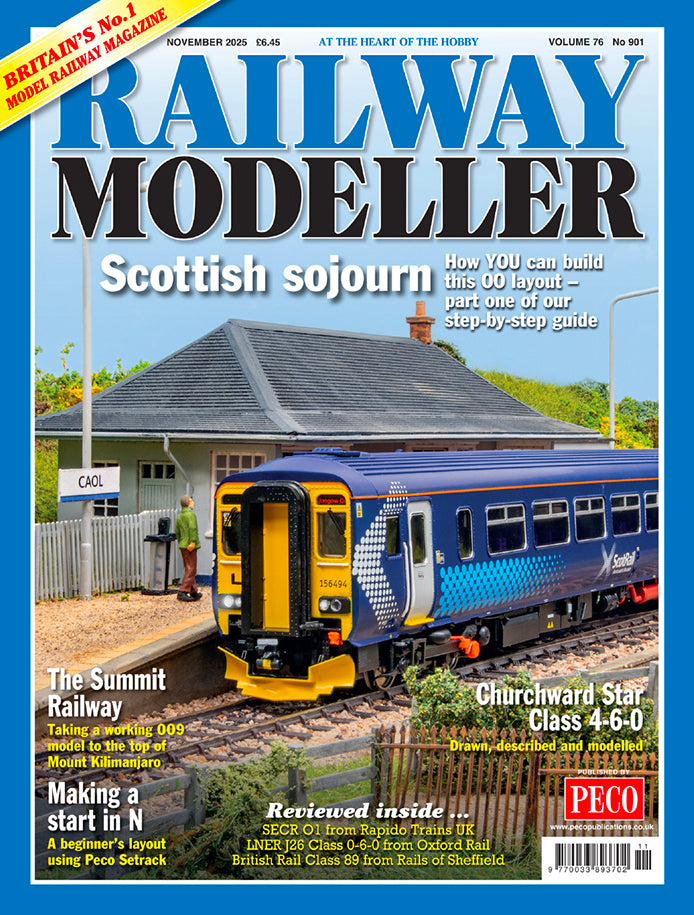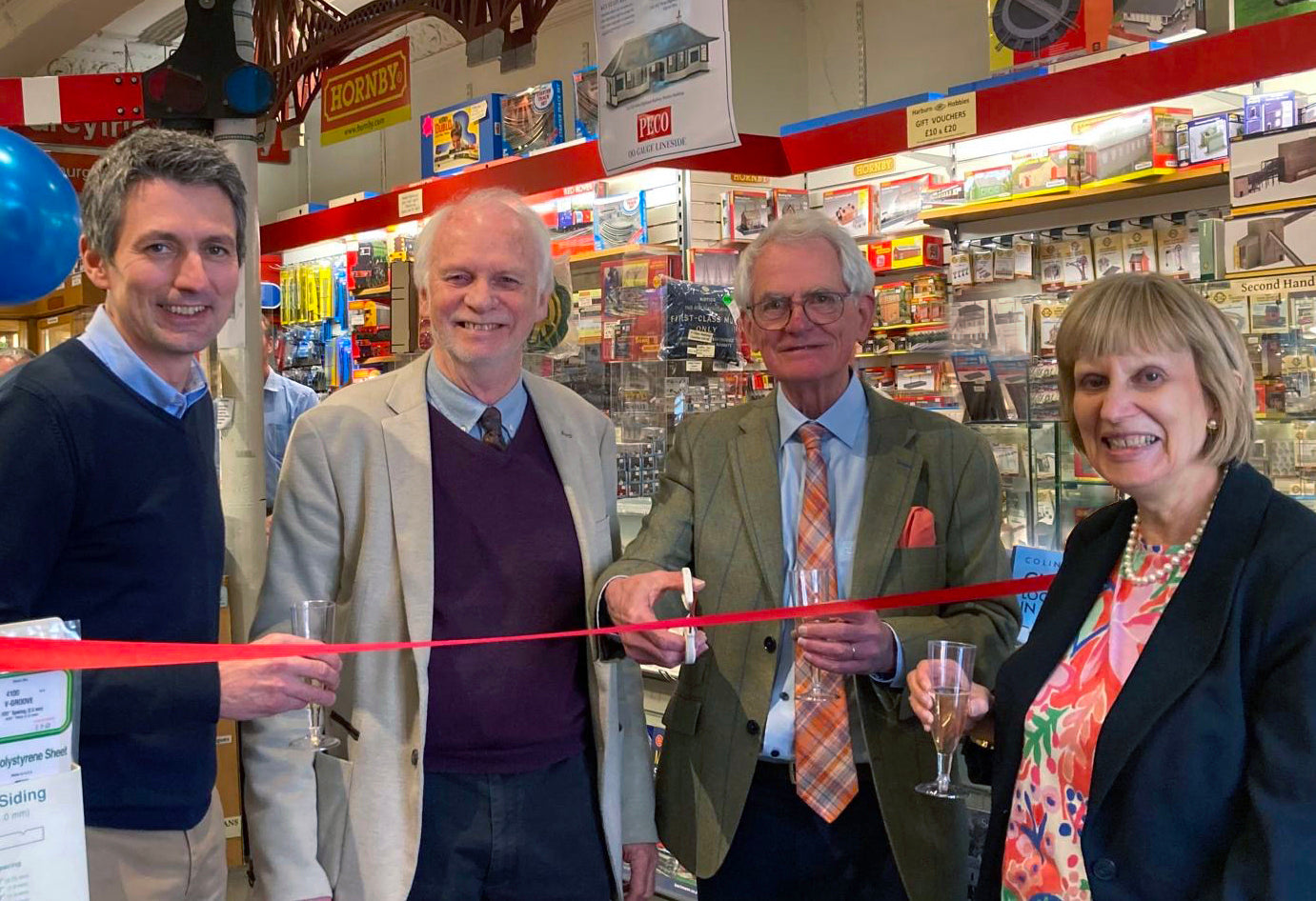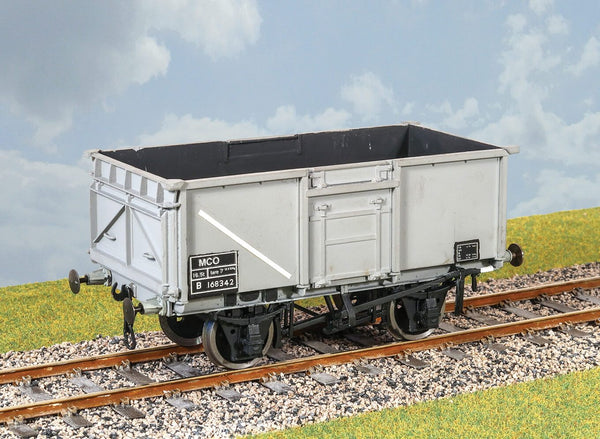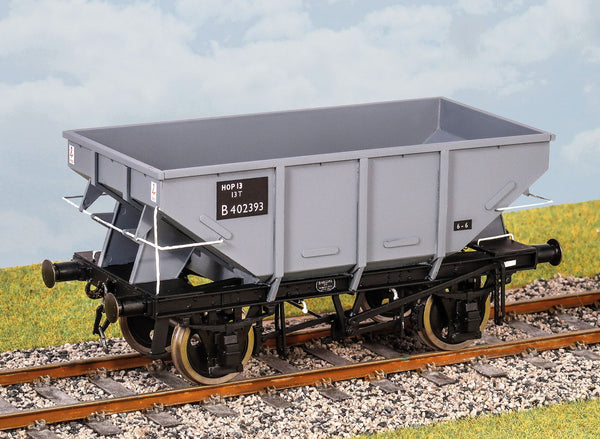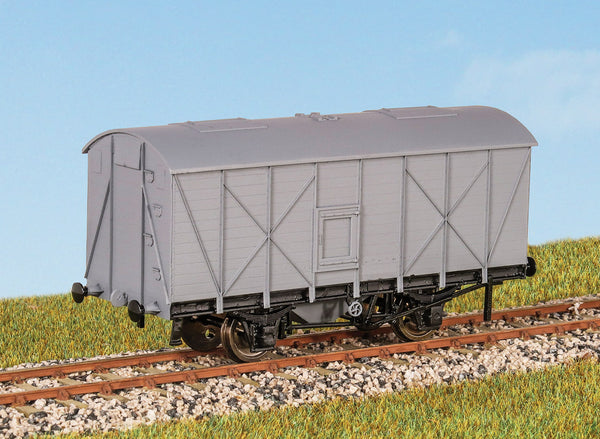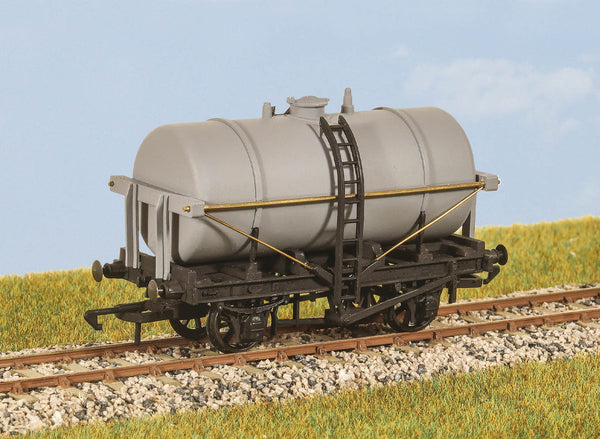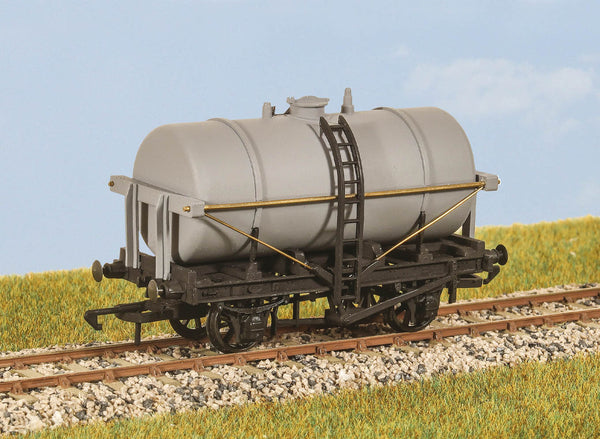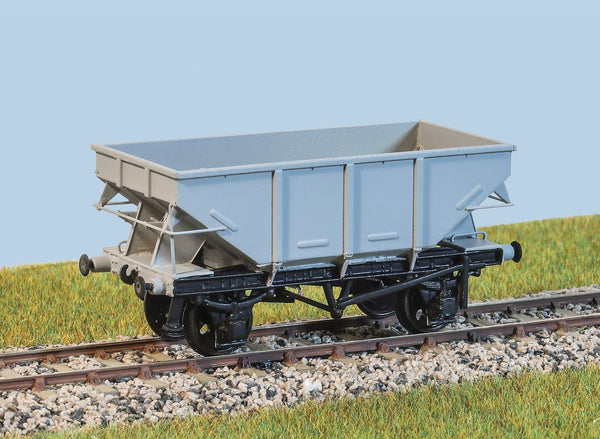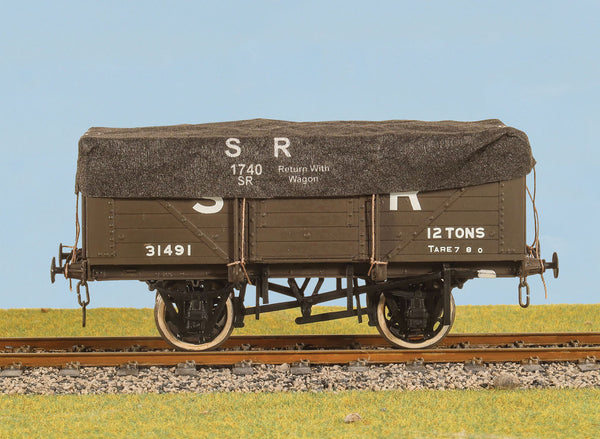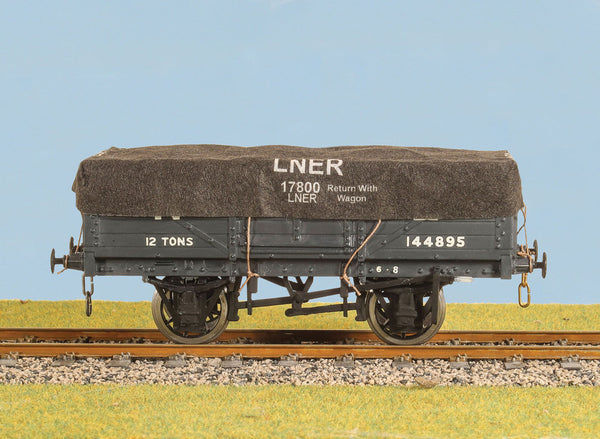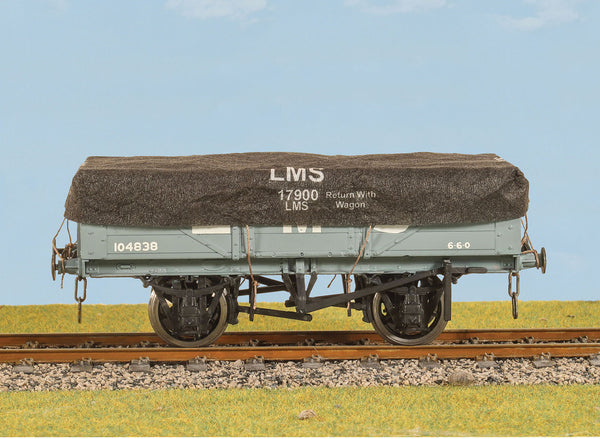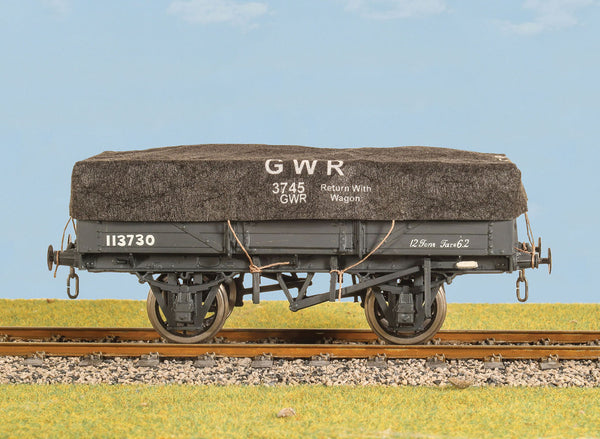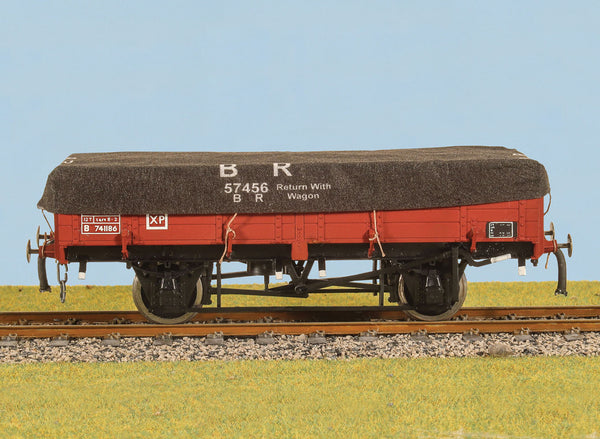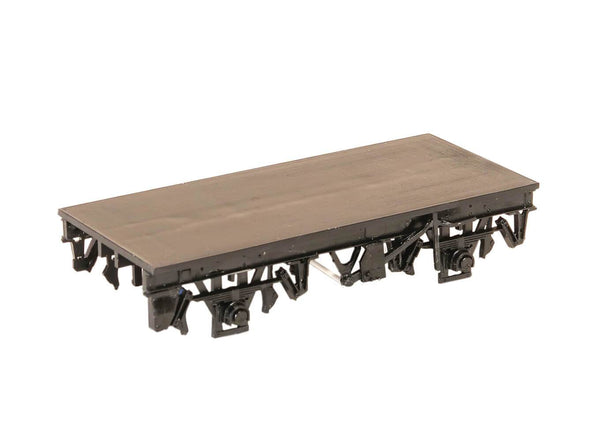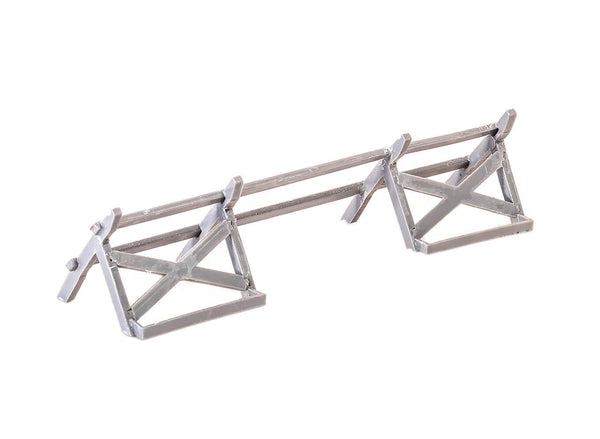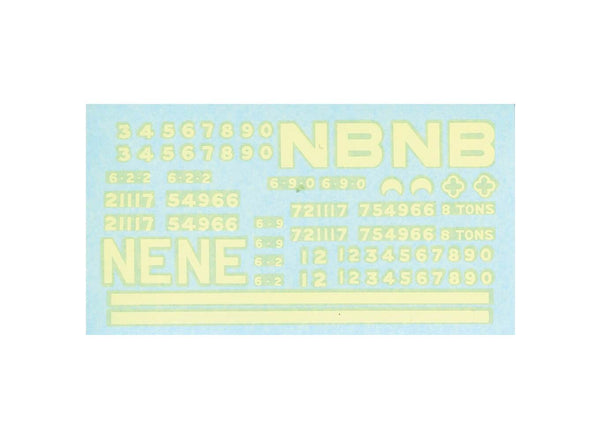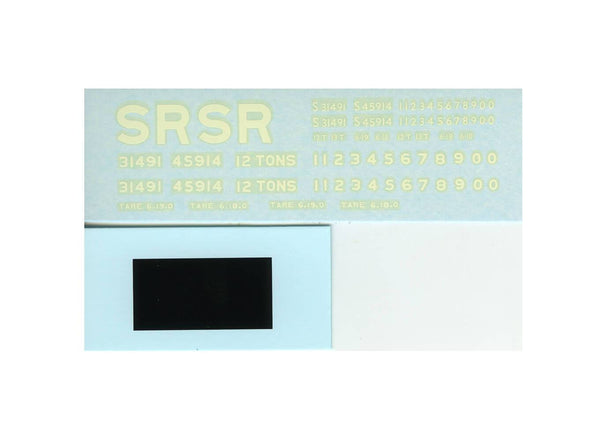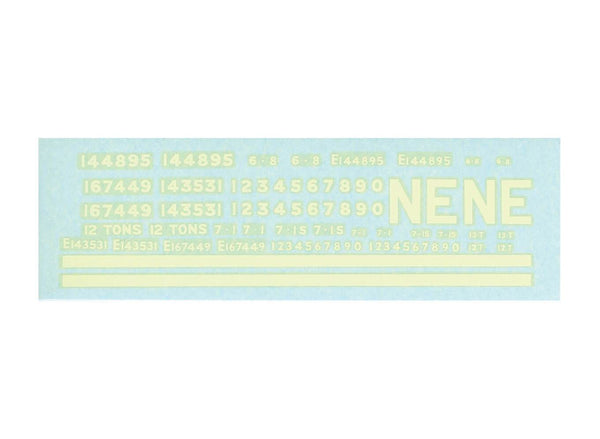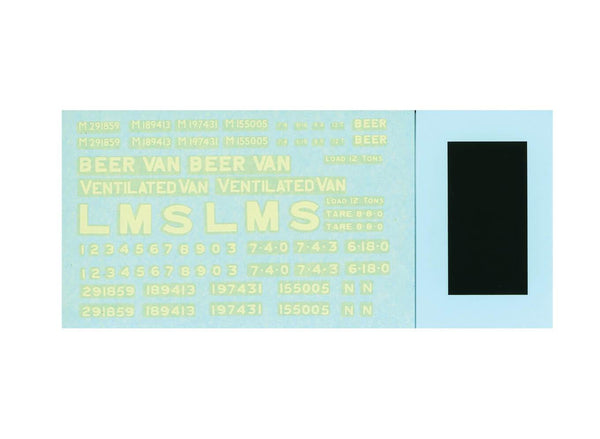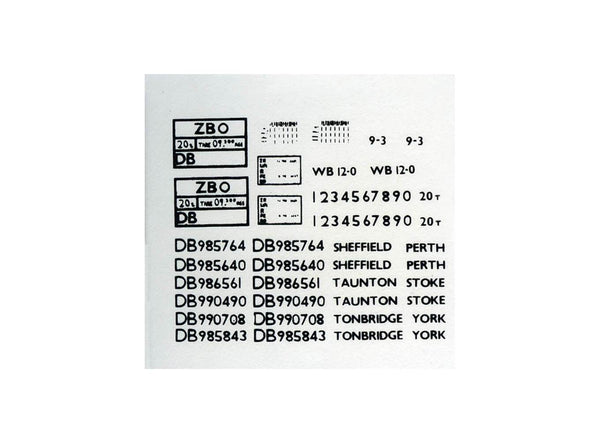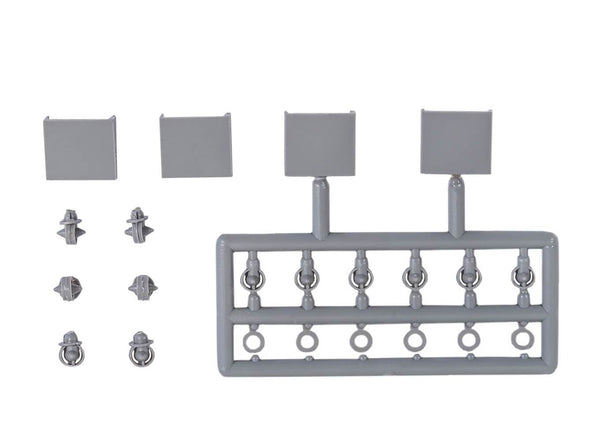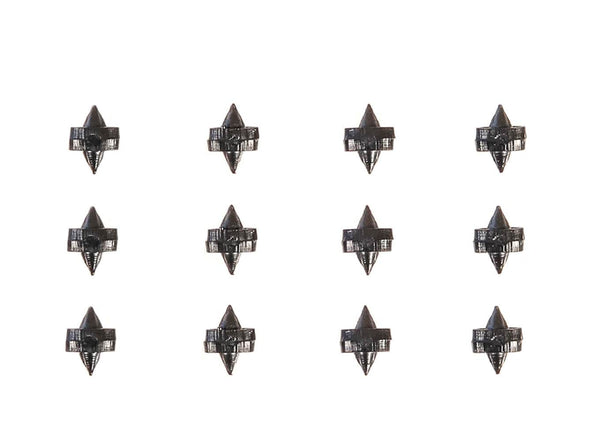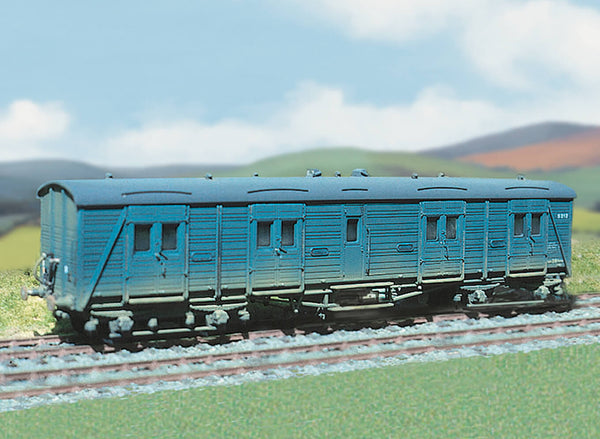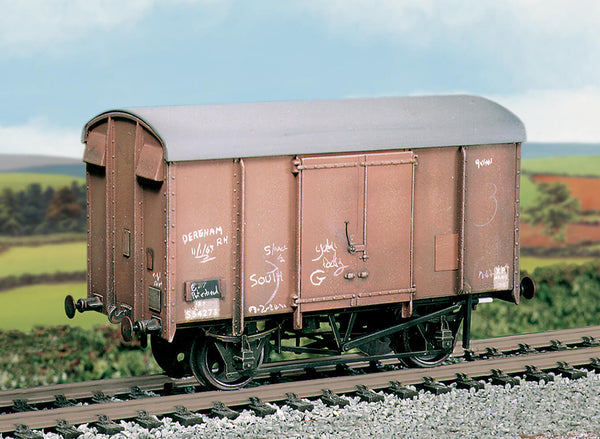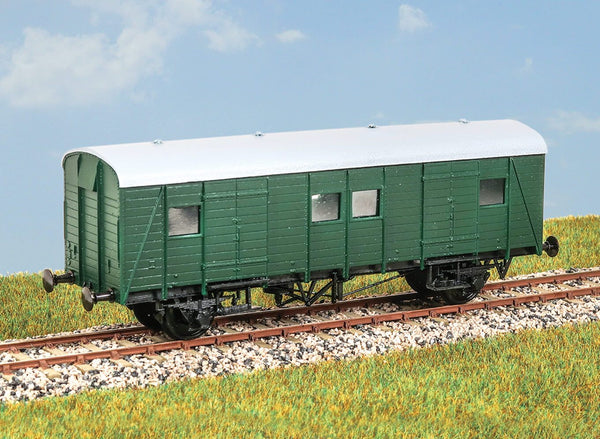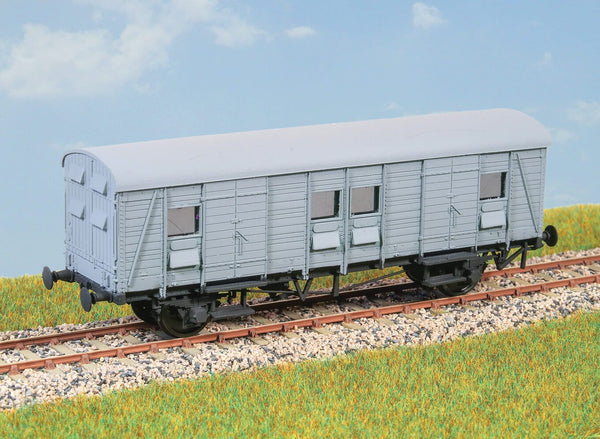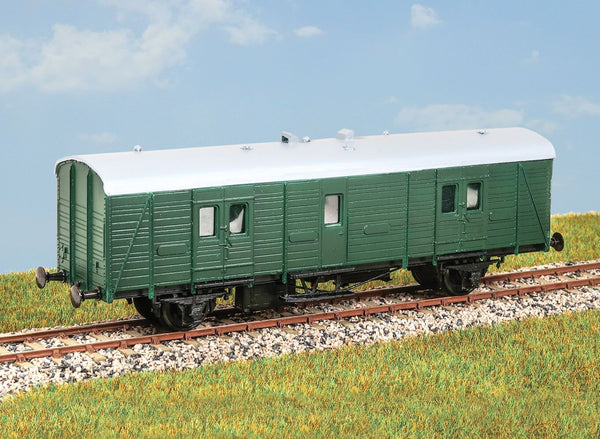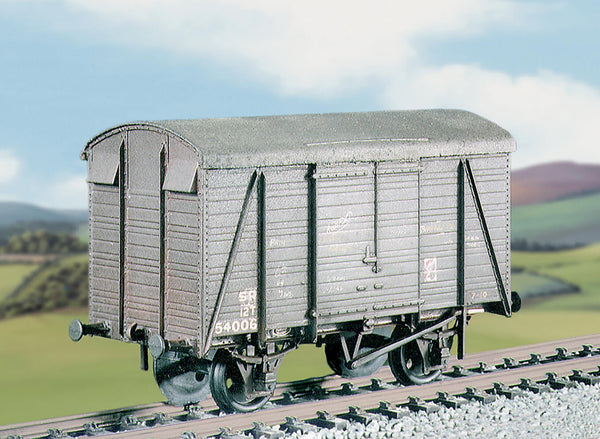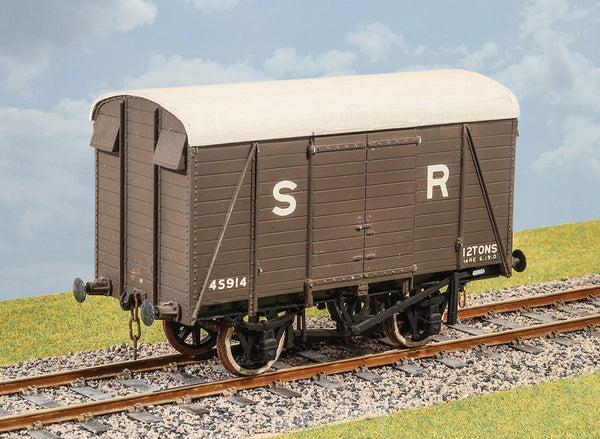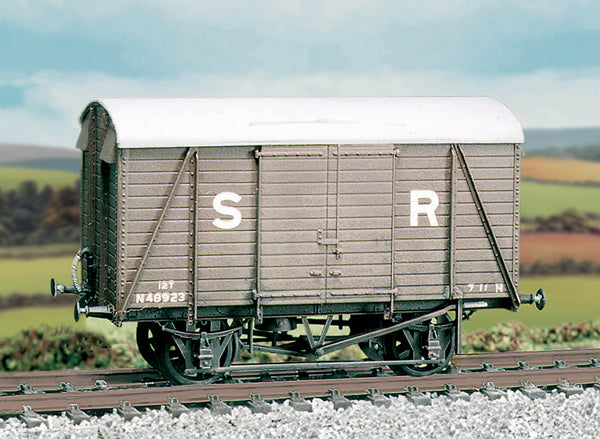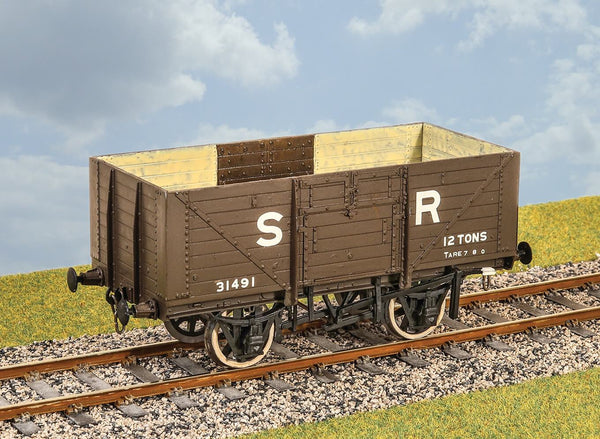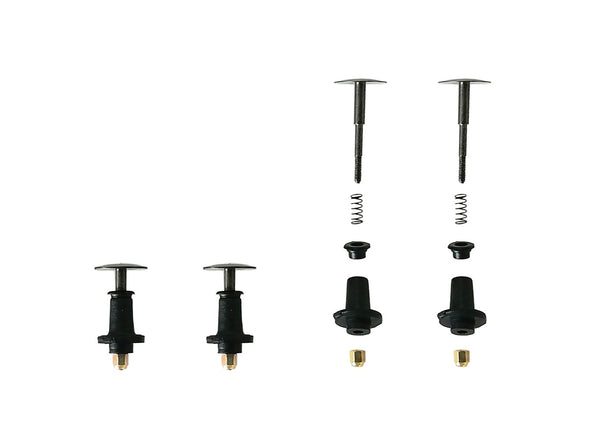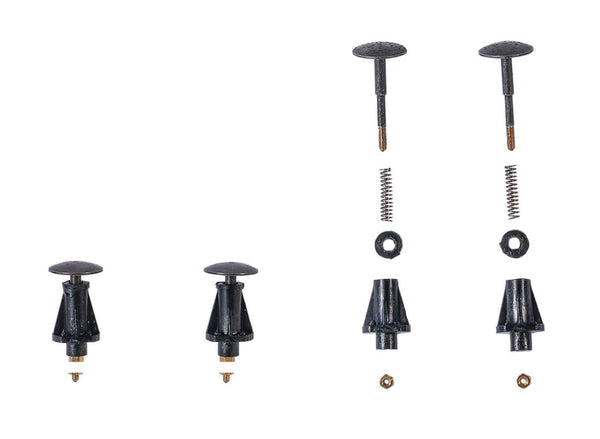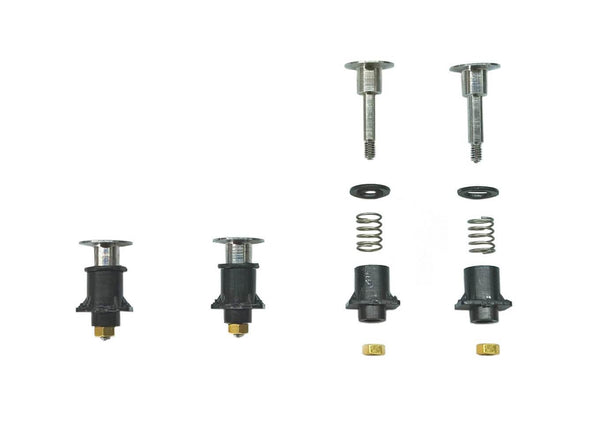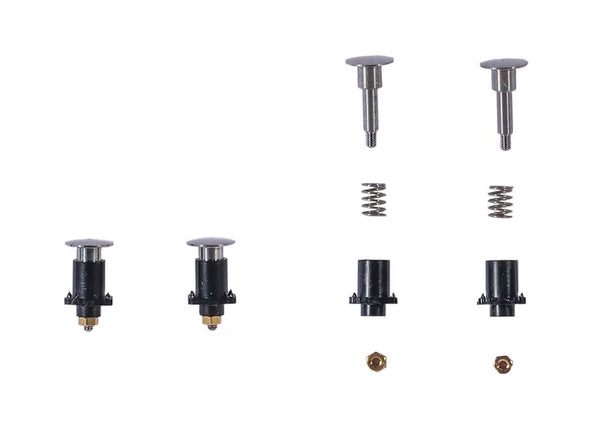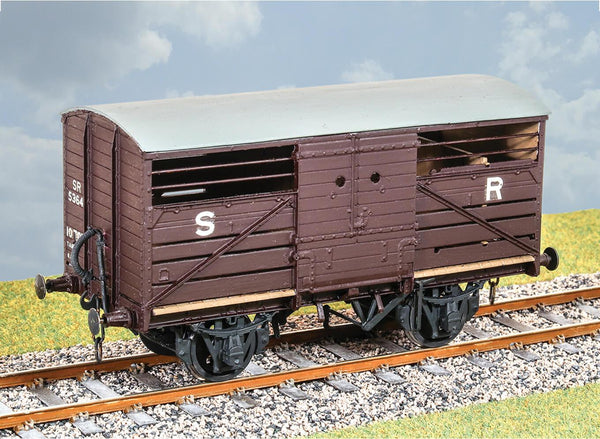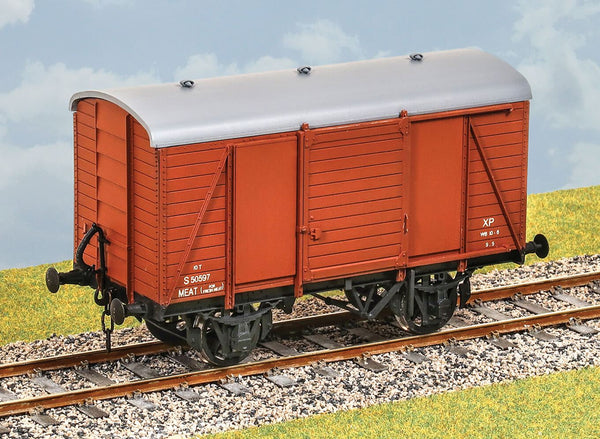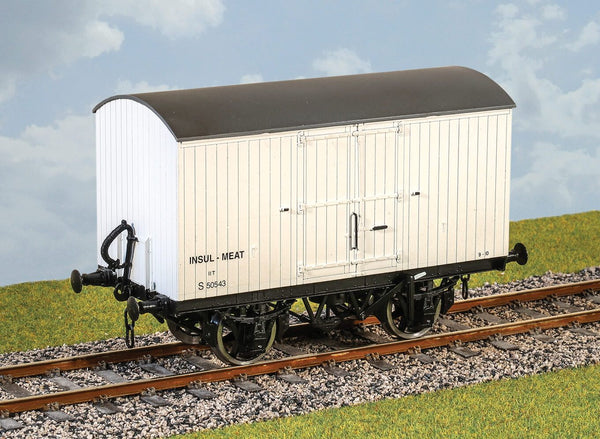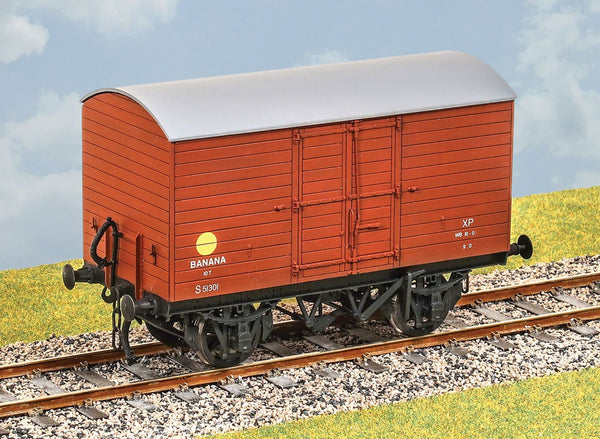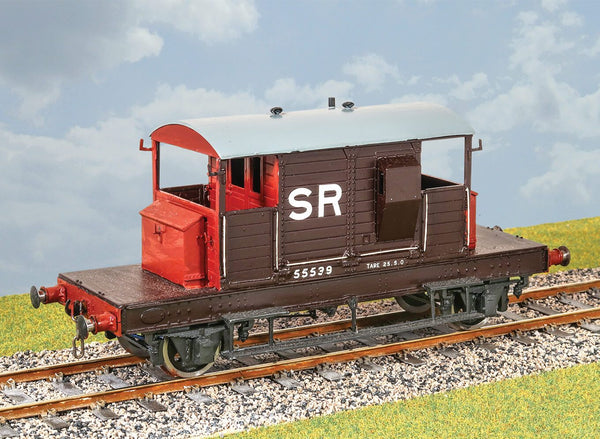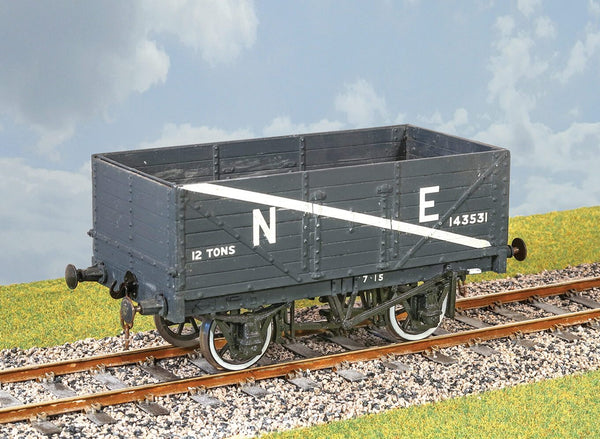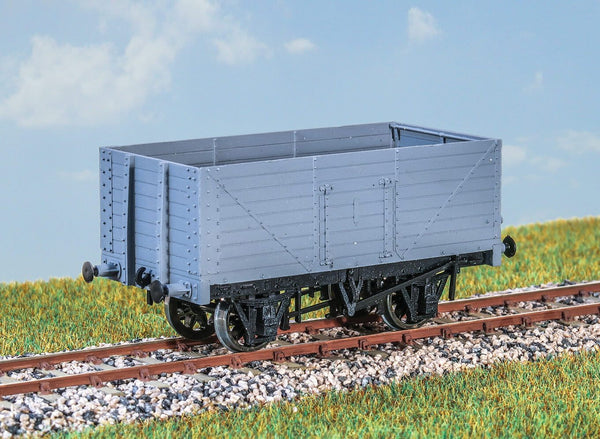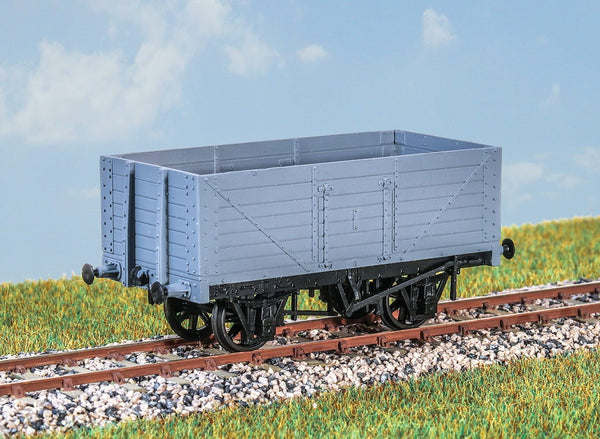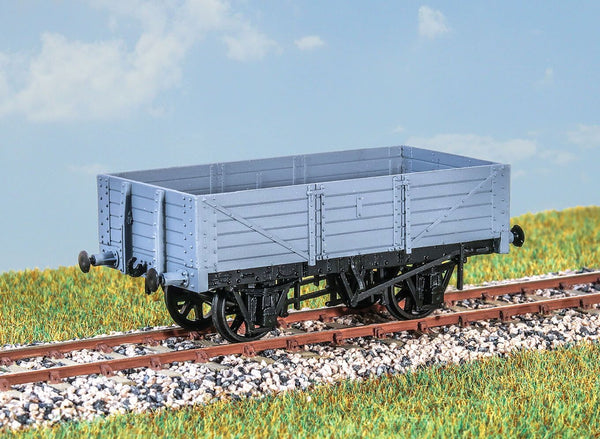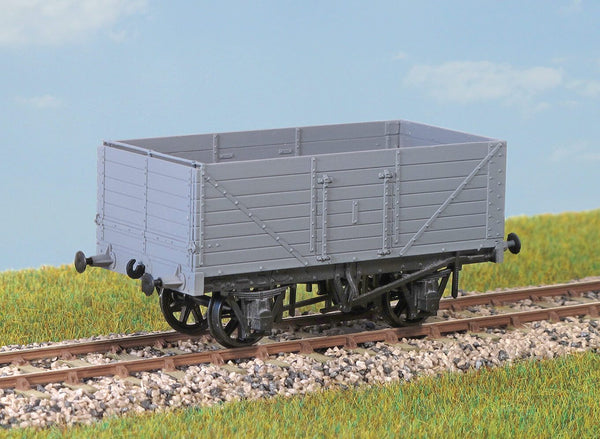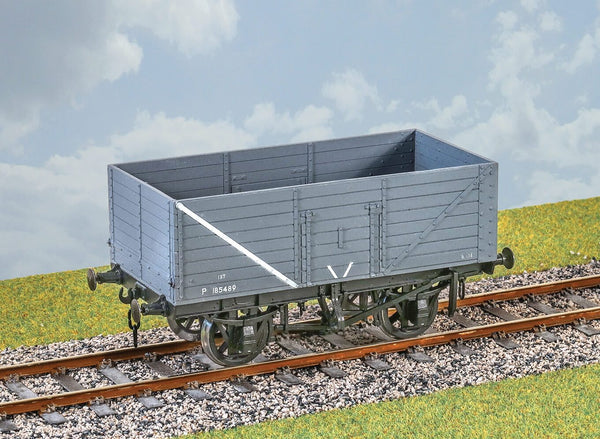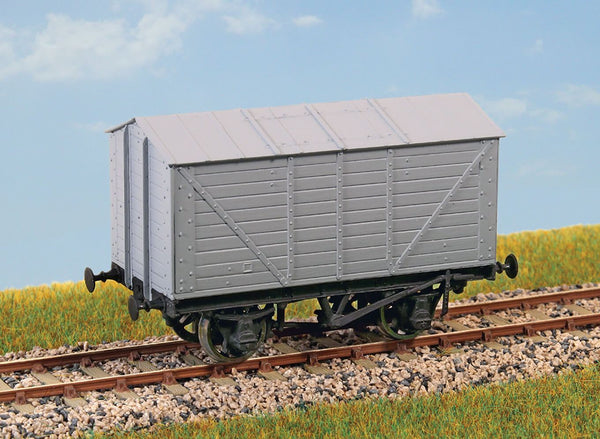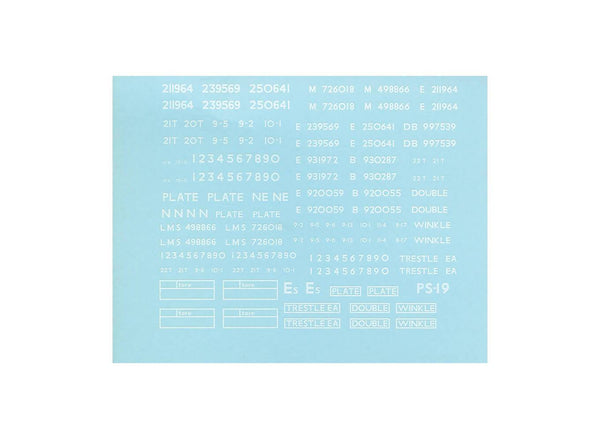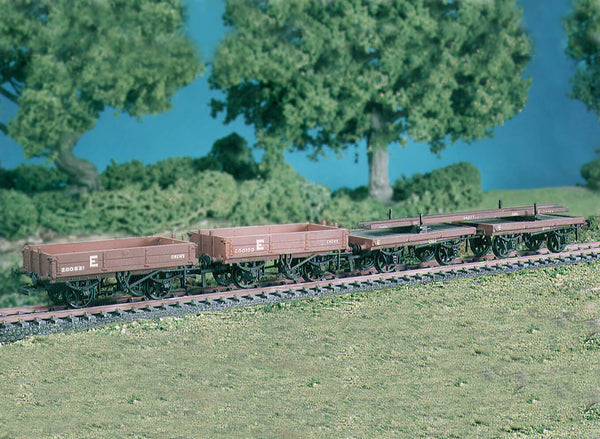BROWSE PECO PRODUCTS
Browse through our complete product portfolio.
225 Products Found
Sprung Wagon Buffers RCH style
Kit and Scratch builder's accessory. Pack contains sufficient parts for 4 Buffers
BR 16ton Mineral Wagon
The definitive BR standard mineral wagon produced in vast quantities during the 1950s, and used well in to the 1980s, carrying coal, scrap metal and many different minerals. Parts included for Instanter couplings and double brake gear. Transfers for early, late and post-TOPS BR. These finely moulded plastic wagon kits come complete with pin point axle wheels and bearings, 3 link couplings and transfers. This kit is supplied with pre-coloured moulded parts although painting can improve the appearance. Additional parts to enable the vehicle to be modelled incorporating modifications made to the prototypes during their working life are included where appropriate.
O Gauge BR-LNER Steel Hopper Wagon Kit
The British Railways LNER 13-ton steel hopper wagon was based on an LNER design but produced in the early British Railways era between 1949 and 1953. It marked a step forward from earlier wooden-bodied wagons by using an all-steel, welded construction, which offered improved durability and reduced maintenance needs. The design reflected the LNER’s long-standing experience with mineral wagons, but was adapted for post-war production methods in BR workshops such as those at Shildon, Faverdale, and York.
Over 2,600 of these wagons were built, and they became a common sight in the North Eastern Region. This was partly because many goods yards in the area had coal-drop staithes, making the bottom-discharge hopper design especially efficient for unloading bulk materials. While they were primarily intended for transporting coal, the hoppers proved versatile and were later used to carry stone, sand, and other aggregates.
The 13-ton steel hopper was a reliable and workmanlike vehicle that served across the UK for several decades. Its robust construction meant it could withstand heavy use, and it became a mainstay of freight traffic in the post-war period. Although newer wagon designs eventually replaced them, some examples remained in service into the early 1980s, making them one of the longer-lived mineral wagon types of the mid-20th century.
British Railways Bulk Grain Wagon Kit (LNER)
Around 100 of these vans were built by the LNER between 1921 and 1936 for the transportation of grain, initially from the Port of Hull. In time their use became more widespread, often finding work transporting barley from Lincolnshire to the maltings in Scotland. The remaining wagons were retired in the mid-1970s.
Our new kit really is all-new. Brand new tooling producing some very fine plastic mouldings. In addition to that the kit includes brass bearings, fine scale metal wheels and NEM pockets for the tension lock couplers included. A set of waterslide decals for both the LNER and BR periods are included. Assembly is really straight forward aided by the clear and helpful instructions. The resulting model is one that would make a fine addition to any layout, and from a retailer's point of view there is the added attraction of being able to sell multiple kits given that modellers would likely require a rake of these wagons!
Parkside OO - 4-Wheel Oil Tank Wagon Kit
These kits have been transferred over to Parkside from the PECO "Wonderful Wagons" range, a long-standing favourite kit of modellers for many years. Back then these kits were pre-coloured and decorated, but we have overhauled the kits, added an NEM pocket (so modellers can easily fit a coupler of their choice - although the kit is supplied with a set of tension-lock couplers) and now supply the kits with either a set of milk company decals (PC91) or oil company decals (PC92). The decals provide a whole lot more detail than previously applied to the original pre-decorated kits.
Parkside OO - 4-Wheel Milk Tank Wagon Kit
These kits have been transferred over to Parkside from the PECO "Wonderful Wagons" range, a long-standing favourite kit of modellers for many years. Back then these kits were pre-coloured and decorated, but we have overhauled the kits, added an NEM pocket (so modellers can easily fit a coupler of their choice - although the kit is supplied with a set of tension-lock couplers) and now supply the kits with either a set of milk company decals (PC91) or oil company decals (PC92). The decals provide a whole lot more detail than previously applied to the original pre-decorated kits.
British Railways 13 Ton Steel Body Hopper (LNER)
Over 2,600 of these wagons were built for use on British Railways, between 1949 and 1953. They became synonymous with the North East Region, where coal drop staithes were commonly provided in the station goods yard, so a bottom-discharge hopper was the obvious type to use. Although intended for transporting coal, in later life they became more nomadic around the UK and were used for carrying other materials such as stone and sand. The last examples lingered in service until the early 1980s.
SR Wagon Tarpaulin
O Scale SR wagon tarpaulin, produced from a material that convincingly replicates the texture and look of canvas tarpaulins once commonly used on open wagons, to protect the contents underneath. Each product contains 3 tarpaulins.
LNER Wagon Tarpaulin
O Scale LNER wagon tarpaulin, produced from a material that convincingly replicates the texture and look of canvas tarpaulins once commonly used on open wagons, to protect the contents underneath. Each product contains 3 tarpaulins.
LMS Wagon Tarpaulin
O Scale LMS wagon tarpaulin, produced from a material that convincingly replicates the texture and look of canvas tarpaulins once commonly used on open wagons, to protect the contents underneath. Each product contains 3 tarpaulins.
GWR Wagon Tarpaulin
O Scale GWR wagon tarpaulin, produced from a material that convincingly replicates the texture and look of canvas tarpaulins once commonly used on open wagons, to protect the contents underneath. Each product contains 3 tarpaulins.
BR Wagon Tarpaulin
O Scale BR wagon tarpaulin, produced from a material that convincingly replicates the texture and look of canvas tarpaulins once commonly used on open wagons, to protect the contents underneath. Each product contains 3 tarpaulins.
VEA Chassis Air braked detail.
Air brake, no headstocks as supplied with VEA ex Vanwide kit PC76.
Trestle Set
Kit and scratch builders accessory; as included in the LNER/BR Trestle wagon kit PC17.
Transfers (Waterslide) LNER/BR from kits PS.3-PS-04 and PS11
Kit and Scratch builder's accessory.
Transfers (Pressfix) for BR Grampus.
Transfers for early and post TOPS BR (from kit PS14)
SR/BR 28ton Bogie 'B' Van Kit
These vans were first built in 1937 and continued in use until 1986 on newspaper and mail trains. Transfers are included; glue and paints are required to complete this model.
SR/BR 12ton Box Van with Plywood Sides Kit
First built in 1945, 2,500 of these vans were constructed of plywood owing to the post war shortage of other materials. Transfers and brass buffers included; glue and paint are required to complete this model.
SR PMV Parcels Van
This kit builds the basic SECR design, but has additional parts to model the SR built batches of the 1930s. These vehicles were used widely and examples still survive in departmental use. These finely moulded plastic wagon kits come complete with pin point axle wheels and bearings. Glue and paint will be required, along with appropriate transfers. Additional parts to enable the vehicle to be modelled incorporating modifications made to the prototypes during their working life are included where appropriate.
SR CCT Parcels Van
50 of these vans were built in 1938, with examples lasting into the 1980s and used to carry parcels, mail, luggage and motor vehicles. They were equally at home on branch line or main line trains. These finely moulded plastic wagon kits come complete with pin point axle wheels and bearings. Glue and paint will be required, along with appropriate transfers. Additional parts to enable the vehicle to be modelled incorporating modifications made to the prototypes during their working life are included where appropriate.
SR BY Utility Van
Introduced in 1937, these vans (diagram 3092) were used for parcel and mail traffic on branch or mainline trains. In service until the late 1970s. These finely moulded plastic wagon kits come complete with pin point axle wheels and bearings. Glue and paint will be required, along with appropriate transfers. Additional parts to enable the vehicle to be modelled incorporating modifications made to the prototypes during their working life are included where appropriate
SR 12ton Uneven Planked Ventilated Box Van Kit
Built 1941 to 1944 by the Southern Railway, they also made 500 to the same design for the LMS and 650 for the GWR. Transfers are included; glue and paints are required to complete this model.
SR 12ton Goods Van
Features the characteristic elliptical roof. This kit represents one of the 450 built 1929 – 1931. These vans lasted into the 1960s, and some found further use in departmental service. Transfers for SR and BR. These finely moulded plastic wagon kits come complete with pin point axle wheels and bearings, 3 link couplings and transfers. This kit is supplied with pre-coloured moulded parts although painting can improve the appearance. Additional parts to enable the vehicle to be modelled incorporating modifications made to the prototypes during their working life are included where appropriate.
SR 12ton Even Planked Ventilated Box Van Kit
1,000 of this design were built by the Southern Railway from 1936 to 1939. Extra vents and transfers are included for the Dover ferry van version. Glue and paints are required to complete this model.
SR 12ton 8 Plank Open Wagon
Only the Southern had 8-plank open wagons, the type favoured by the SECR and LSWR. With many variations, this kit represents one of 3,000 built in 1926 – 1928. Lasted until the early ‘60s. Transfers for SR and BR. These finely moulded plastic wagon kits come complete with pin point axle wheels and bearings, 3 link couplings and transfers. This kit is supplied with pre-coloured moulded parts although painting can improve the appearance. Additional parts to enable the vehicle to be modelled incorporating modifications made to the prototypes during their working life are included where appropriate.
Sprung Wagon Buffers NB Style
Kit and Scratch builder's accessory. Pack contains sufficient parts for 4 Buffers
Sprung Wagon Buffers
Kit and Scratch builder's accessory. Pack contains sufficient parts for 4 Buffers
Sprung SR Brake Van Buffers
Kit and Scratch builder's accessory. Pack contains sufficient parts for 4 Buffers
Sprung LMS Brake Van Buffers
Kit and Scratch builder's accessory. Pack contains sufficient parts for 4 Buffers
SR Standard Cattle Wagon
The Southern built 299 of these vans between 1930 and 1939. Many of these wagons lasted into the 1960s, despite the decline in livestock traffic. Transfers for SR and BR. These finely moulded plastic wagon kits come complete with pin point axle wheels and bearings, 3 link couplings and transfers. This kit is supplied with pre-coloured moulded parts although painting can improve the appearance. Additional parts to enable the vehicle to be modelled incorporating modifications made to the prototypes during their working life are included where appropriate.
SR Meat Van
The Southern built 100 of these vans between 1931 and 1934 to carry fresh meat from the West Country to principle markets in London and the Midlands. They lasted in service into the 1960s. The sliding doors made them quite unusual. Transfers for SR and BR. These finely moulded plastic wagon kits come complete with pin point axle wheels and bearings, 3 link couplings and transfers. This kit is supplied with pre-coloured moulded parts although painting can improve the appearance. Additional parts to enable the vehicle to be modelled incorporating modifications made to the prototypes during their working life are included where appropriate.
SR Insulated Van
75 insulated vans were built in 1931, and were used for meat and banana traffic. The carrying capacity was increased to 11 tons in the early 1940s, and lasted in service into the 1960s. Transfers for SR and BR. These finely moulded plastic wagon kits come complete with pin point axle wheels and bearings, 3 link couplings and transfers. This kit is supplied with pre-coloured moulded parts although painting can improve the appearance. Additional parts to enable the vehicle to be modelled incorporating modifications made to the prototypes during their working life are included where appropriate.
SR Banana Van
200 of these vans were built in 1935 and lasted into the 1960s. They were not confined to the Southern, and could therefore be found throughout Britain, especially as bananas were imported through a number of ports. Transfers for SR and BR. These finely moulded plastic wagon kits come complete with pin point axle wheels and bearings, 3 link couplings and transfers. This kit is supplied with pre-coloured moulded parts although painting can improve the appearance. Additional parts to enable the vehicle to be modelled incorporating modifications made to the prototypes during their working life are included where appropriate.
SR 25ton Goods Brake Van
Construction of this type began in 1929, lasting until 1933. They tended to be used on local and slow goods trains. After Nationalisation they migrated into the BR system, some lingering on into the 1970s and 1980s. Transfers for SR and BR. These finely moulded plastic wagon kits come complete with pin point axle wheels and bearings, 3 link couplings and transfers. This kit is supplied with pre-coloured moulded parts although painting can improve the appearance. Additional parts to enable the vehicle to be modelled incorporating modifications made to the prototypes during their working life are included where appropriate.
RCH 1923 Pattern 7 Plank Mineral Wagon
Specified by the Railway Clearing House as the standard medium capacity coal wagon. Dates from 1923 and has oil lubricated axle boxes. In service until the early 1960s. These finely moulded plastic wagon kits come complete with pin point axle wheels and bearings, 3 link couplings and transfers. This kit is supplied with pre-coloured moulded parts although painting can improve the appearance. Additional parts to enable the vehicle to be modelled incorporating modifications made to the prototypes during their working life are included where appropriate.
RCH 1923 Design 8 Plank Coal Wagon
8-plank 12 ton Coal Wagon RCH Design 1923 Many thousands of these wagons were built to a standard Railway Clearing House design between the wars, for collieries and coal merchants. Latterly in BR stock, they lasted into the early 1960s. These finely moulded plastic wagon kits come complete with pin point axle wheels and bearings. Glue and paint will be required, along with appropriate transfers. Additional parts to enable the vehicle to be modelled incorporating modifications made to the prototypes during their working life are included where appropriate.
RCH 1923 Design 7 Plank Coal Wagon
7-plank 12 ton Coal Wagon (Fixed Ends) RCH 1923 Thousands of these wagons were built to a standard Railway Clearing House design between the wars, mainly for coal merchants. Latterly in BR stock, they lasted into the early 1960s. These finely moulded plastic wagon kits come complete with pin point axle wheels and bearings. Glue and paint will be required, along with appropriate transfers. Additional parts to enable the vehicle to be modelled incorporating modifications made to the prototypes during their working life are included where appropriate.
RCH 1923 Design 5 Plank Mineral Wagon
5-plank 12 ton Mineral Wagon (Fixed Ends) RCH 1923 Built in the 1920s to carry roadstone, built to a Charles Robert design with steel sheet floor. Some lasted into the 1960s. These finely moulded plastic wagon kits come complete with pin point axle wheels and bearings. Glue and paint will be required, along with appropriate transfers. Additional parts to enable the vehicle to be modelled incorporating modifications made to the prototypes during their working life are included where appropriate.
RCH 1923 Design 12ton Coal Wagon
7-plank 12 ton Coal Wagon RCH Design 1923 Many thousands of these wagons were built to a standard Railway Carriage House design between the wars. This type was also used by both the LNER and LMS. Widely used until the early 1960s. These finely moulded plastic wagon kits come complete with pin point axle wheels and bearings. Glue and paint will be required, along with appropriate transfers. Additional parts to enable the vehicle to be modelled incorporating modifications made to the prototypes during their working life are included where appropriate.
Private Owners Steel Chassis 13ton Mineral Wagon
These ex-private owner wagons were built in the 1930s using steel chassis for collieries and merchants. They came under Government control in 1939, later allocated to the NCB, who then sold them to BR, where they lasted into the 1960s. Transfers for BR. These finely moulded plastic wagon kits come complete with pin point axle wheels and bearings, 3 link couplings and transfers. This kit is supplied with pre-coloured moulded parts although painting can improve the appearance. Additional parts to enable the vehicle to be modelled incorporating modifications made to the prototypes during their working life are included where appropriate.
Private Owner Grain Wagon
Built in the 1920s, these vehicles carried grain to distilleries, breweries and flour mills. Examples of these interesting wagons lasted in service until as late as 1970. These finely moulded plastic wagon kits come complete with pin point axle wheels and bearings. Glue and paint will be required, along with appropriate transfers . Additional parts to enable the vehicle to be modelled incorporating modifications made to the prototypes during their working life are included where appropriate.
Plate, Double Bolster and Trestle Wagon Transfers:
LNER/LMS/BR Wagon Transfers: Plate, Double Bolster and Trestle (from kits PS19/20 and 21).
Permanent Way Wagons Kit
Set of 4 wagons, 2 flat wagons for carrying rail sections, and 2 low sided open wagons for ballast and track maintenance equipment. The kit includes metal wheels,transfers, brass buffer heads and the rail load as shown, and requires glue and paint to complete.




